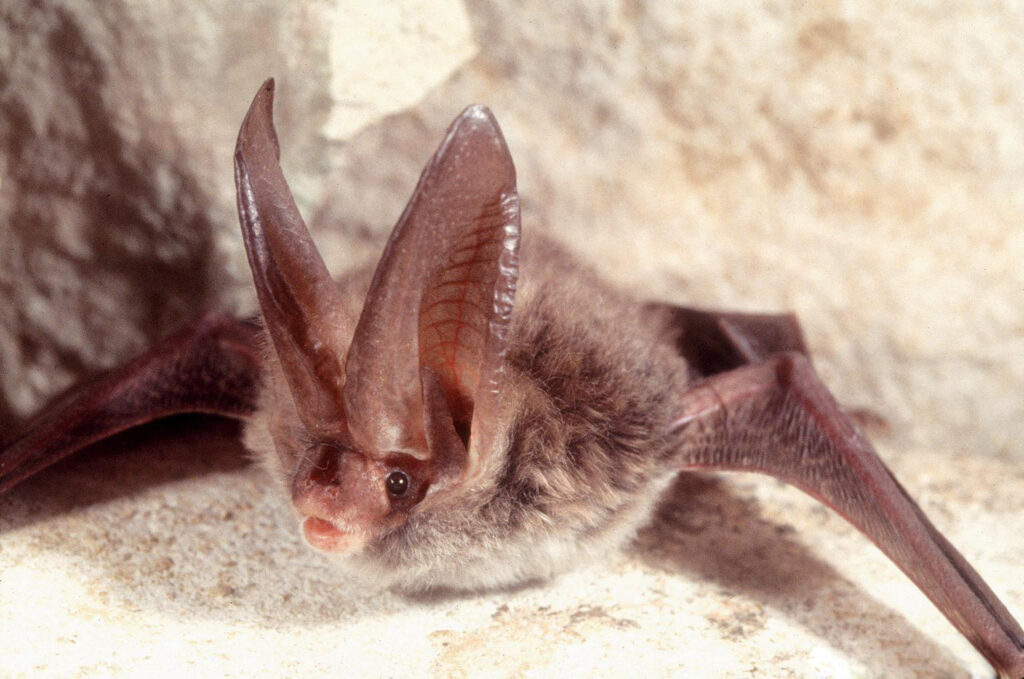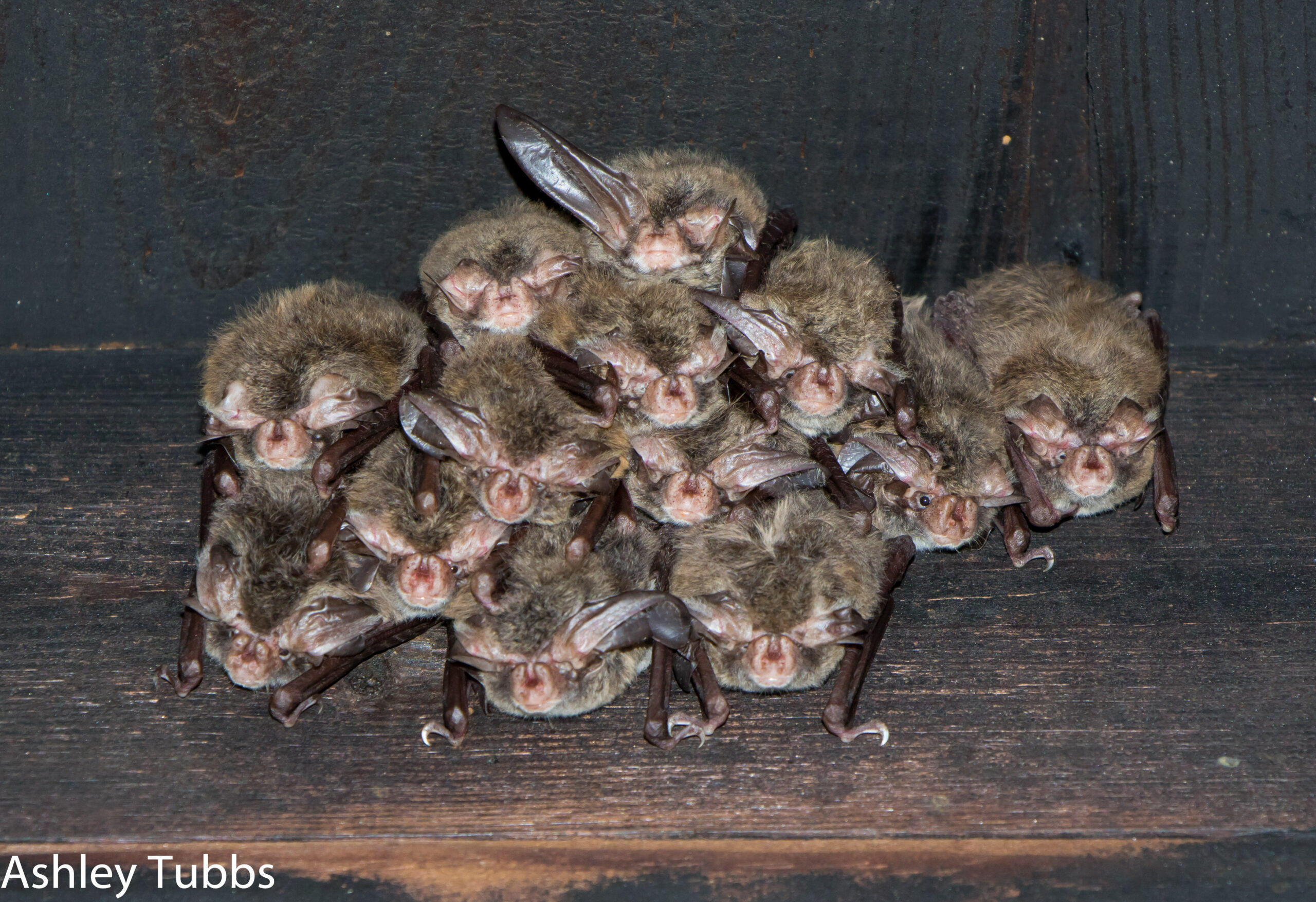by Shaila Palamand, PWL Member

In honor of Bat Appreciation Month, let’s celebrate one of the Piney Woods’ lesser-known species: Rafinesque’s big-eared bat (Corynorhinus rafinesquii)
Rafinesque’s big-eared bat is a species native to the southeastern United States, and particularly suited for the East Texas Piney Woods. This medium-sized bat is distinguished by its exceptionally large ears, which can be up to 1/3 the length of its body. These ears play a critical role in helping this bat navigate and locate prey in the dense forest environment. Here are more fun facts about this endEARing creature. (See what we did there?)
Background: This bat was named after Constantine Samuel Rafinesque, a French-born American polymath who first described the species in 1818.
Alternative Names: Southeastern big-eared bats, eastern big-eared bats, eastern lump-nosed bats, eastern long-eared bats.
Appearance: This distinctive mammal has big, rabbit-like ears and a round nose. Its long, slender wings are great for maneuvering through thick forests, and its brown and gray coloring serve as camouflage among the trees. At around 3-4 inches in length, it is considered a medium-sized bat.
Diet: These bats are insectivorous, with a diet primarily consisting of moths (around 90%), but also including beetles, mosquitos and other flying invertebrates.
Behavior: Rafinesque’s big-eared bats are nocturnal creatures. They roost in small colonies, often forming strong social bonds with fellow colony members. Like many other bat species, they use echolocation to hunt – and they do it quite well, due to those giant ears! Males establish territories in maternity colonies during the breeding season, where they court receptive females. After mating, the females store the sperm and delay fertilization until spring, a phenomenon known as delayed implantation.
Habitat: They are usually found in large areas of relatively mature forest. As they prefer a mix of pines and hardwoods for roosting and foraging, the forests of the Piney woods are ideal! However, they can also be found in abandoned buildings, under bridges, in wells, and in caves.
Benefits: Due to their diet, Rafinesque’s big-eared bats help to control insect populations and maintain a healthy ecological balance.
Status: Though its population has not been monitored precisely, evidence indicates that the Rafinesque’s numbers have declined significantly, likely due to habitat loss, development, and the use of pesticides impacting its food supply. It is listed as a threatened species in Texas.

To learn even more about this unique bat species, check out these sources:
https://tpwd.texas.gov/huntwild/wild/species/rafinesque/
https://animaldiversity.org/accounts/Corynorhinus_rafinesquii/
https://en.wikipedia.org/wiki/Rafinesque%27s_big-eared_bat
Top of page Photo Credit: “File:Rafinesque big-eared bat 5476130-SMPT.jpg” by U.S. Department of Agriculture is licensed under CC BY 2.5.


